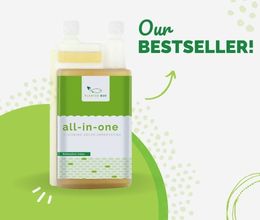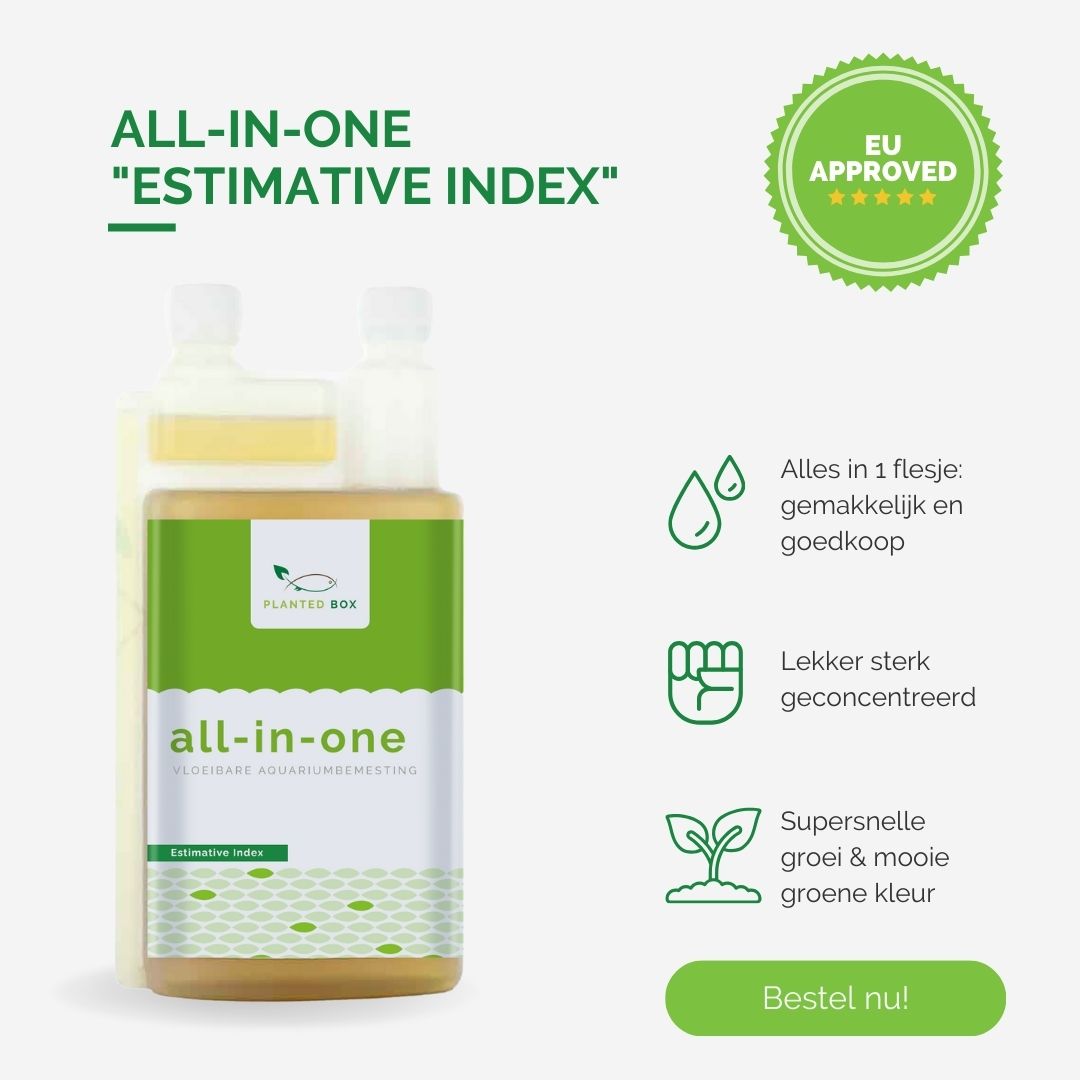Ah, algae. It’s the bane of many an aquarist’s existence. From stubborn green spots on the glass to unsightly hair algae clinging to plants, algae outbreaks can quickly turn a pristine aquarium into an eyesore. While many strategies exist for algae prevention, sometimes you need to bring out the big guns. That’s where hydrogen peroxide algae treatment comes into play. Using hydrogen peroxide is a controversial, but often effective, method to combat stubborn algae.
Understanding hydrogen peroxide algae treatment
Hydrogen peroxide (H2O2) is a powerful oxidising agent that can effectively eliminate various types of algae by disrupting their cell membranes and interfering with their metabolic processes. Unlike some other algaecides, hydrogen peroxide decomposes into water and oxygen, making it a more environmentally friendly choice. The trick to effectively use it is to use hydrogen peroxide in a specific way to target harmful algae without killing any of your fish, aquatic plants, or beneficial bacteria.
How safe is hydrogen peroxide for aquarium use?
One of the things that makes new aquarists hesitant about using hydrogen peroxide is its safety. As long as you do not exceed the dosings mentioned in this article, everything should be fine. In any case, you should never overdose and only use the 3% H202 solution.

Hydrogen peroxide algae treatment methods
There are two main methods for using hydrogen peroxide (H2O2) to treat algae growth in aquariums:
The “spot treatment”
This method involves direct application of hydrogen peroxide onto affected areas using a syringe or a dropper. Use the following steps when doing a spot treatment:
- Turn off filters and any airstones to prevent any hydrogen peroxide from being diluted and dispersed too quickly.
- Using a syringe needle, carefully apply the 3% hydrogen peroxide directly to the algae. It’s important to avoid contact with any fish or healthy plants.
- Leave for 10-15 minutes so the (H2O2) can work on the algae.
- Turn your filters and pumps back on. Any residual hydrogen peroxide will be removed.
- Repeat the spot treatment as needed, usually every few days, until the algae is gone.
- Keep a watchful eye on your tank’s inhabitants. If any fish or plant shows any stress, perform a partial water change immediately.
A word to the wise: don’t get too close to delicate plants, such as coral moss, as hydrogen peroxide will travel “uphill” via capillary action and potentially cause harm.
Never use more than 0.7ml x the tank volume. For example, if you have a 100 liter aquarium, never dose more than 70ml of hydrogen peroxide in one day. For certain sensitive plants, such as aquarium moss, I would skip the hydrogen peroxide treatment. However, it is not a problem for most aquarium plants.
Full tank treatment with hydrogen peroxide
If you have a more widespread algae issue, it would be better to do a full tank treatment with hydrogen peroxide. Doing this can be risky to plants, invertebrates or fish so use this as a last resort when previous spot treatments have failed.

Here are the steps:
- Take out as much algae as possible. Take out clumps from rocks and glass using a syphon to make it easier to clear your aquarium water.
- After that, take out around 50% of your aquarium water for a partial water change.
- Measure a dose of 0,7ml per liter of water (3% solution). If you have, for instance, a 200L tank then the maximum dose is 140ml H202 3%. Add this to 500ml of water.
- Slowly pour the solution of water and hydrogen peroxide into an area with high water flow, allowing it to disperse throughout the tank.
- Again, you’ll observe bubbles – a sure sign that the peroxide is working. Don’t fret, it’s just the oxygen being released.
- Let the peroxide work for about 30 minutes. Then, refill the tank with fresh, dechlorinated water.
- Repeat this process for 3 to 4 days if needed, being mindful to avoid exceeding the recommended dose and observing any adverse reactions in your tank. Remember, consistency and observation are crucial here.
- After your last dose, do another significant water change (at least 50%.). This helps flush out any remaining peroxide and algae debris. Adding an efficient bacteria starter can also help repopulate the beneficial bacteria that might have been affected by the peroxide.
Precautions and considerations for hydrogen peroxide treatment
Hydrogen peroxide algae treatment should not be your go-to solution, but it is something to consider as a last resort. Here’s a little breakdown of safety and best practices. Investing extra time in this approach can make a difference.
Start low, go slow with dosing
When it comes to hydrogen peroxide algae treatment, follow the golden rule: start low, go slow. Always opt for a lower dosage at first and increase it gradually. Keep an eye on your fish and other aquarium inhabitants during and after the treatment to look for signs of stress. If you start losing fish, stop treatment immediately.
Be careful with aquasoils
Are you using an aquasoil? Then keep in mind that the H202 can break down the granules of your aquasoil since it is also made of organic material. However, if you use at a safe dosage, this is usually not a problem.

Test your water parameters
After you’ve decided to go with the hydrogen peroxide treatment, ensure that you have an idea of your water parameters. Test the levels of nitrate, ammonia, nitrite and PH so you have an idea of your water chemistry. Knowing this will give you information on how to balance the water and make adjustments, leaving a healthy environment for your livestock and plants.
Hydrogen peroxide expiration matters
A quick tip for you before you start using your hydrogen peroxide –make sure it’s not expired. It’s best to use a fresh unopened bottle so you know that the entire solution is still potent enough to work on the algae. After opening, you have about six months to use, after which, you would have to throw it away.
Watch out for invertebrates
You would need to monitor your snails and shrimps if you have any in your aquarium. Some shrimps might turn a lighter colour temporarily after they come into contact with hydrogen peroxide. There’s no harm in taking them out of the aquarium when necessary.
Preventing algae outbreaks
When you do encounter a stubborn algae infestation, it’s important to look to the root of the growth of the algae. Why did it happen in the first place? Perhaps you need to prioritise balancing the nutrients of your aquarium or check for inadequate plant growth. Another culprit is inconsistent tank care. Prevention is way better than spending hours on maintenance.
Never underestimate regular water changes to help balance nutrients in the environment. Clean your hardscapes, vacuum the gravel and trim the plants on a regular basis to make sure you don’t have another major outbreak or overdose your environment.
Healthy plants are your best defence against algae in an aquarium. They compete for the same resources, limiting algae growth. Plants like Riccia fluitans or Riccardia sp. can outcompete algae effectively. The important thing to note is thriving plants are essential for long-term algae control, even if introducing hydrogen peroxide seems like a quick solution.
Conclusion
Hydrogen peroxide, when used correctly, can treat algae outbreaks effectively. But it’s a short-term fix. Addressing the root cause of stubborn algae growth is crucial to prevent the issue from happening again. A well-maintained aquarium with strong plant growth is the key. Don’t depend solely on hydrogen peroxide. Pair it with preventative strategies for a flourishing planted tank.









